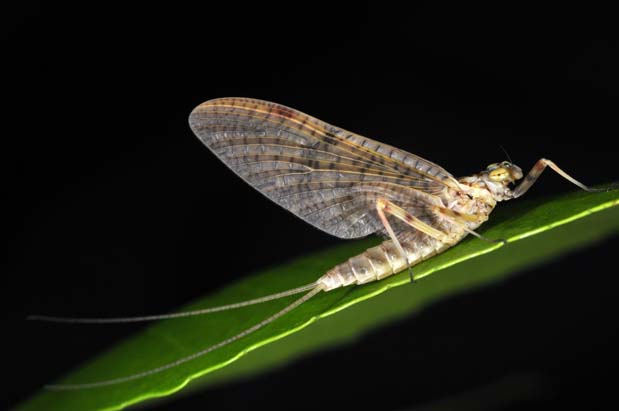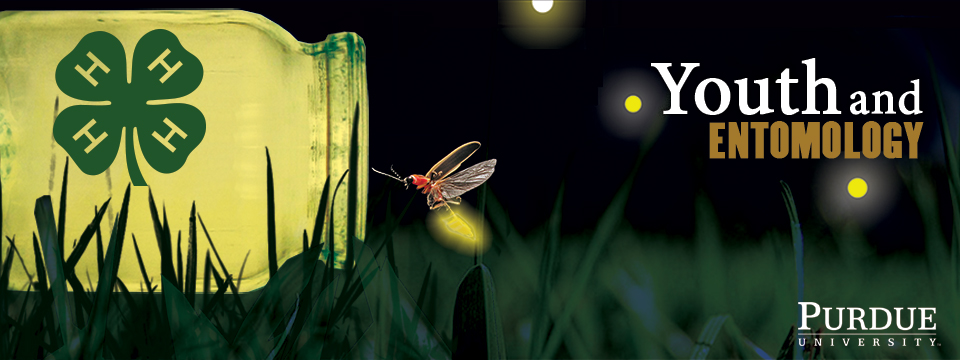

|
|
Mayfly adult
(John Obermeyer, Purdue University) |
|
Common Name: Mayfly - adult
See also: larva | benefit Scientific Name: Ephemeroptera: Several families and species Status: important component of the food chain Beneficial Stage: immature and adult Biology: Mayfly adults and immatures (nymphs or naiads) are one of the most common insects of freshwater ecosystems. Adults have two large, membranous wings with extensive wing venation throughout that are held upright, like a butterfly, when at rest. The second pair of wings is reduced or lacking. Legs are long, and the body is roughly cylindrical, bearing two very long, filamentous tails (cerci) at the end. Adults are very short-lived and may only be present a couple of hours to a few days, but the immature stages may last a year or more. The mayfly lays its eggs in lakes or streams. After hatching, the nymphs may molt twenty to thirty times during a period of a few months to a year, depending on the species. Mayfly nymphs are distinctive in that most have seven pairs of gills on the abdomen. In addition, most possess three long tails at the end of their bodies. Nymphs live primarily under rocks in streams or in decaying vegetation. Mayflies are unique among the winged insects because they molt one more time after acquiring functional wings. Mayflies are very common in the water, and when a hatch is on, the number of adults that congregate on the shorelines, near structures, and even in nearby towns can be staggering. |
 |
||||||||||||||||
|
|
|||||||||||||||
|
Purdue Extension Entomology, 901 West State Street, West Lafayette, IN 47907 USA, (765) 494-4554 Department of Entomology | College of Agriculture | Extension © Purdue University | An equal access/equal opportunity university | Integrity Statement | Copyright Complaints | Maintained by ENTM IT Trouble with this page? Disability-related accessibility issue? Please contact us at entmwebmaster@purdue.edu so we can help. | ||||||||||||||||
